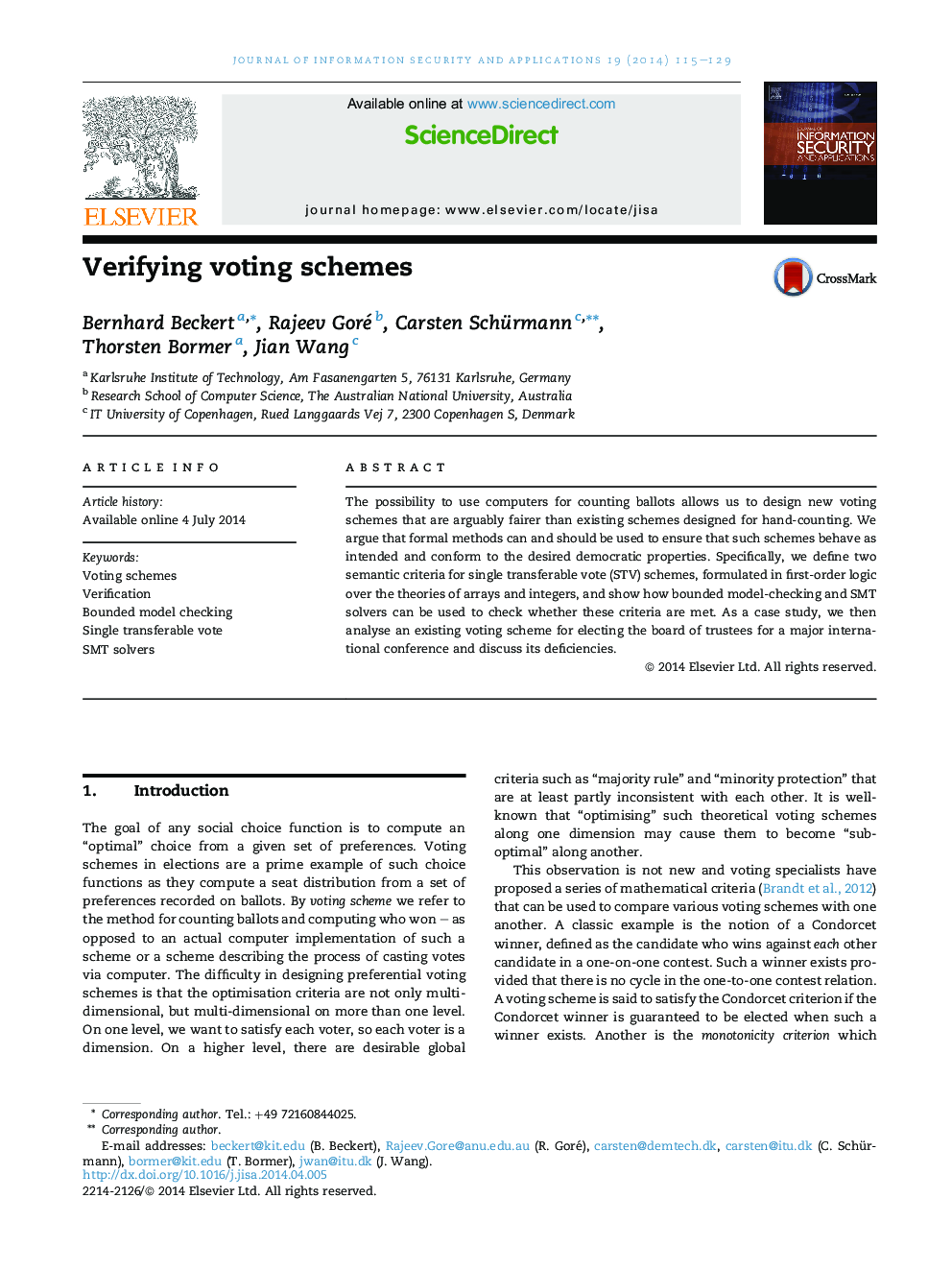| Article ID | Journal | Published Year | Pages | File Type |
|---|---|---|---|---|
| 458990 | Journal of Information Security and Applications | 2014 | 15 Pages |
Abstract
The possibility to use computers for counting ballots allows us to design new voting schemes that are arguably fairer than existing schemes designed for hand-counting. We argue that formal methods can and should be used to ensure that such schemes behave as intended and conform to the desired democratic properties. Specifically, we define two semantic criteria for single transferable vote (STV) schemes, formulated in first-order logic over the theories of arrays and integers, and show how bounded model-checking and SMT solvers can be used to check whether these criteria are met. As a case study, we then analyse an existing voting scheme for electing the board of trustees for a major international conference and discuss its deficiencies.
Related Topics
Physical Sciences and Engineering
Computer Science
Computer Networks and Communications
Authors
Bernhard Beckert, Rajeev Goré, Carsten Schürmann, Thorsten Bormer, Jian Wang,
